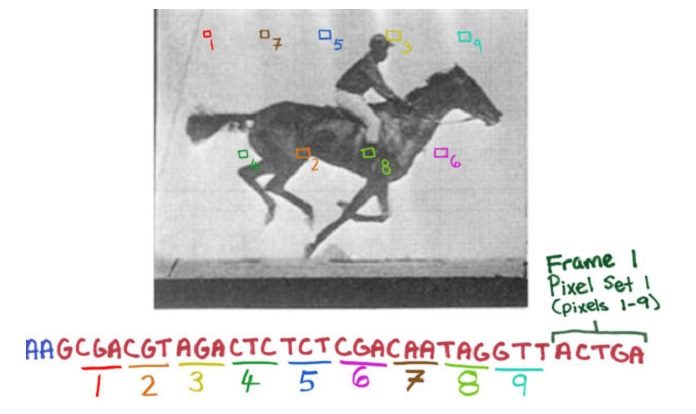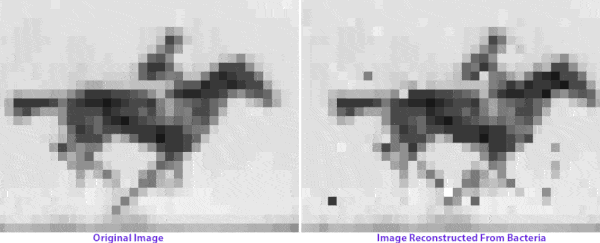For the first ever time, scientists at the Harvard University have encoded a movie into the DNA bacteria. While scientists have previously set the records for storing digital data into DNA. That approach could also be engineered into an effective memory device able to create a chronological record of cells’ molecular experiences during development.
The recorder built through the CRISPR system allows cells to acquire bits of chronologically provided, DNA-encoded information that generates a memory in a bacterium’s genome.
Inspired from this, Scientists have developed further as a first-of-its-kind approach. From the CRISPR system, they have encoded information in living cells that is as complex as a digitized image of a human hand. This represents the first time researchers have encoded and played back a video/ short movie into the DNA.
The CRISPR system helps bacteria develop immunity against the constant onslaught of viruses in their environments. As a memory of survived infections, it captures viral DNA molecules and generates short “spacer” sequences from them.
It then adds them as new elements upstream of previous elements in a growing array located in the bacterial genomes’ CRISPR locus.
According to scientists, this is way more than just a cinematic milestone.
Neuroscientist Seth Shipman from Harvard University said, “the technique used here could enable living cells to become a real-time “molecular recorder”, capturing unseen biological developments inside the body like a kind of organic Digital Video Recorder.”
“We want to turn cells into historians. We envision a biological memory system that’s smaller and more versatile than today’s technologies, which will track many events non-intrusively over time.”
To test the idea, the team converted each shaded pixel of the horse movie into the DNA code. They then used CRISPR system to embed this sequence of information into the genome of the bacteria E. coli, by adding a new frame of animation each day.
After waiting for a week, scientists leave the bacteria in the lab to divide and multiply, passing the movie on to successive generations as it went– like some kind of biological file sharing process.
After extracting DNA regions from bacteria, the team was able to play back the movie with 90 percent of the information still intact. Meanwhile, living cells can record and retain information in sequence.
Shipman said, “If we had those transcriptional steps, we could potentially use them like a recipe to engineer similar cells. These could be used to model disease or even in therapies.”
Ultimately, the approach could lead to better methods for generating cells for regenerative therapy, disease modeling, and drug testing.

